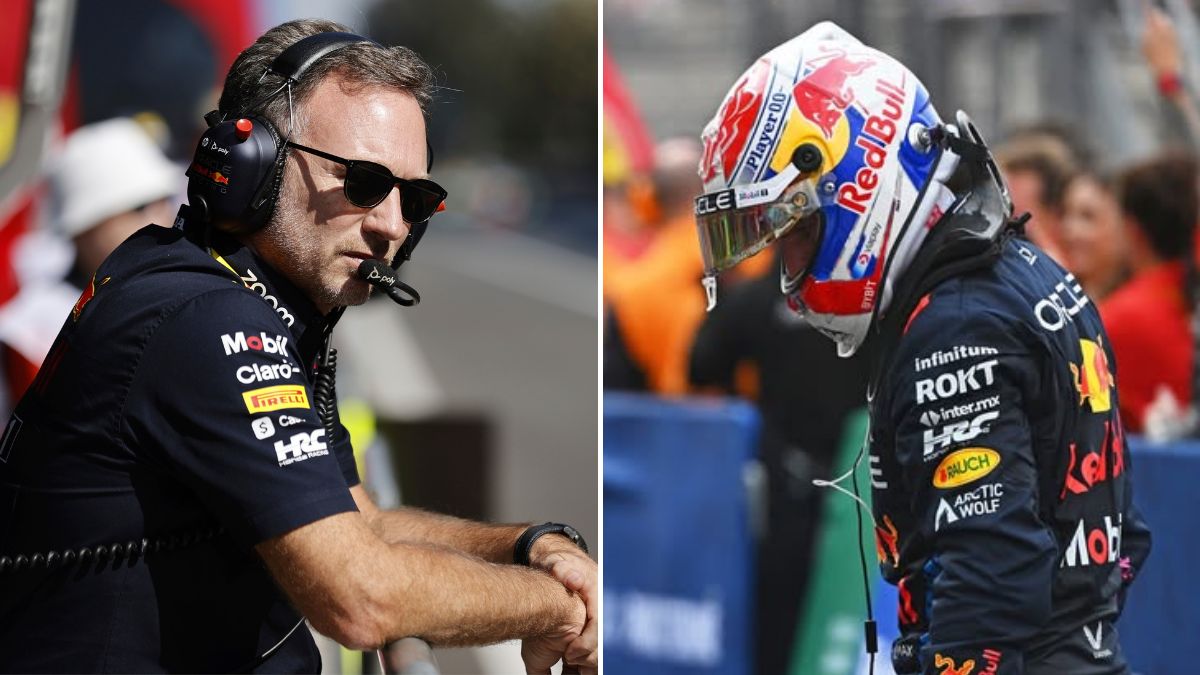The inevitable downfall of Red Bull Racing

With Christian Horner ousted by the Red Bull Racing team after 20 years on the job as team principal and CEO on Tuesday, the writing on the wall seems clear: the once-dominant force in F1 is slipping. Horner’s dismissal was swiftly followed by two other senior members of the team being relieved of their duties—Oliver Hughes, Red Bull's Chief Marketing Officer, and Paul Smith Red Bull’s Group Director of Communications.
And while Horner was not the most liked man in the paddock, he did steer the fairly young team through six Constructors’ Championships and eight Drivers’ Championships—four each bagged by Sebastian Vettel and Max Verstappen.
Yet in recent seasons, Red Bull has looked anything but stable. Internal shake-ups, firings, hirings—it seems that Red Bull is finding it difficult to balance on its wings. So, what went wrong and what will happen next?
The exit of Adrian Newey
Adrian Newey is undoubtedly a pinnacle in motorsport history. The aerodynamic engineer has been a long-time collaborator of the sport, working with the likes of a previously dominant Williams F1 car with Ayrton Senna and Nigel Mansell. He also worked with McLaren before jumping ship to Red Bull.
Newey joined the team in 2006. He created championship-winning cars but his golden child came with the monstrous RB19 during the 2023 season, undoubtedly the most dominant season for the team, winning 21 out of the 22 races that year—earning Max Verstappen his third World Championship and the team their eight and last Constructors’ trophy.
So, when Newey announced his departure to join the Aston Martin F1 team for the 2025 season, it came as quite a shock. Obviously, any team would be lucky to have a veteran like Newey in their team. While Newey cited a desire for change, reports suggest he was uneasy working under Horner, who had faced sexual harassment allegations from a female employee at the start of 2024.
Newey’s timing is strategic. He joins Aston Martin ahead of the regulation changes in Formula 1 in 2026 instigated by the governing body FIA. The revised regulation will include a revised power unit and a shift in aerodynamics—Newey’s speciality. Undoubtedly, Aston Martin just scored F1’s biggest brain.
Newey’s departure was followed by the exit of Jonathan Wheatley, the sporting director of Red Bull who left to join the Sauber F1 team—to be called Audi next season. Safe to say that things were not looking good for the Red Bull team.
“The cursed second seat”
Enter Daniel Ricciardo. A tale of promise derailed. Gear up for a long story.
Ricciardo joined the team in 2014 as a replacement for Mark Webber. His teammate, World Champion Sebastian Vettel, left for Ferrari in 2015 and was replaced by Daniil Kvyat. Kvyat was given the boot in 2016 when a young Verstappen was promoted from Toro Rosso (Red Bull’s sister team, now called Racing Bulls). Ricciardo, a more experienced driver, was quickly overshadowed by the Dutch driver and wanted a change of pace, hence moving to Renault (now Alpine) in 2019, a move that is considered to have ruined the Australian driver's racing career.
Since Ricciardo’s departure, Red Bull’s second seat has been a revolving door of underperformance. The car was given to Pierre Gasly who was dropped after twelve races in favour of Alex Albon. Albon was then replaced by Sergio Perez in 2021 who remained till 2024, making him Verstappen’s only stable teammate.
Despite the fixed placement, Perez, like the others, struggled with the car and often described it as “difficult” to drive. The Mexican driver’s performance witnessed a downward spiral, particularly in 2023. Even with a dominant RB19 machinery, Verstappen managed to cross the finish line first in 19 out of the 22 races, while Perez only won three. Ferrari’s Carlos Sainz Jr. was the only driver to break the Red Bull monopoly that season.
Since Perez’s departure, it was announced that Liam Lawson, a Racing Bull driver, would receive that promotion to Red Bull in 2025. But sadly, the Kiwi driver was promptly sent back to the sister team after just two races, both where he finished in the bottom rankings. Yuki Tsunoda was given the boost and continues to remain in the seat but his performance has worsened over time. The fan-coined term “the cursed second seat” gained traction on social media.
Isack Hadjar of Racing Bulls has been touted to replace Tsunoda soon, but it seems the Frenchman is happy where he is. Given the seat’s history, who could blame him? Hadjar and Lawson have been consistently outperforming their machinery.
Next option? Arvid Lindblad. An F2 driver under Red Bull’s driver development program. But with the second seat’s track record, it may be more of a trap than a triumph.
Max Verstappen’s rumoured move to Mercedes
Was Verstappen instrumental in getting Horner fired? Two theories emerge. One, Verstappen’s rumoured move to Mercedes may have given the sense that Horner did not have things under his control, ringing parent company Red Bull GmBH’s sirens that it was time for a management shift, agreed by Helmut Marko. Two, Verstappen gave an ultimatum to the team—"either Horner goes or I go”.
The Dutchman has not hidden his frustration. He’s repeatedly criticised the car’s balance and excessive understeer—a constant complaint heard on the team’s radio. With rumoured talks with Mercedes team principal Toto Wolff, it would be shocking to see him leave Red Bull. If he does, Verstappen would likely replace George Russell, whose contract ends this year.
With Horner getting the boot, core members who carried the team through championships bidding adieu, the second seat a poisoned chalice, and Verstappen eyeing the exit, it’s safe to assume that the glory days of Red Bull are over. What remains is a fractured team relying on its young past while its future grows uncertain. The fall of Red Bull Racing isn’t coming—it has already begun.
Sports